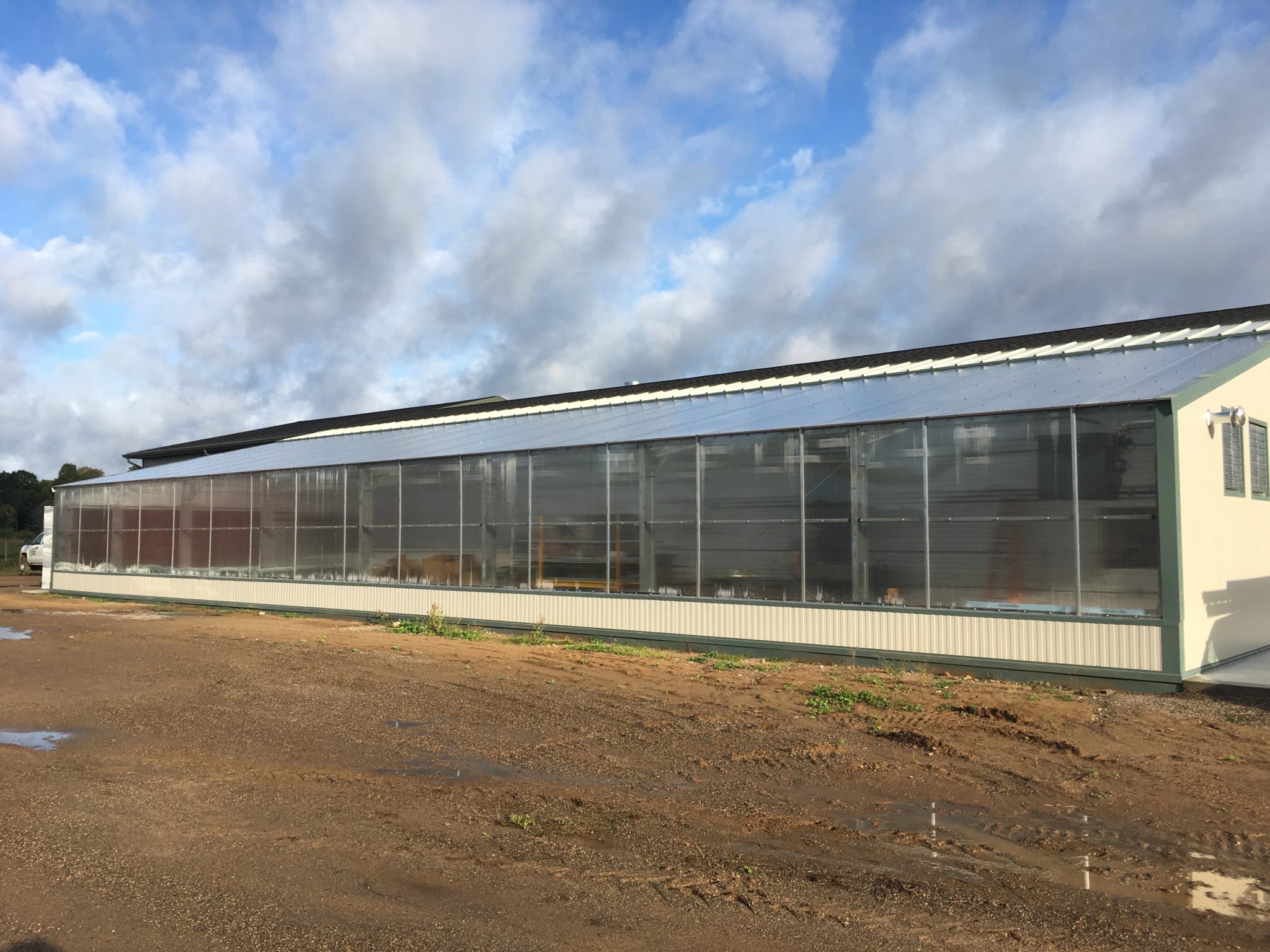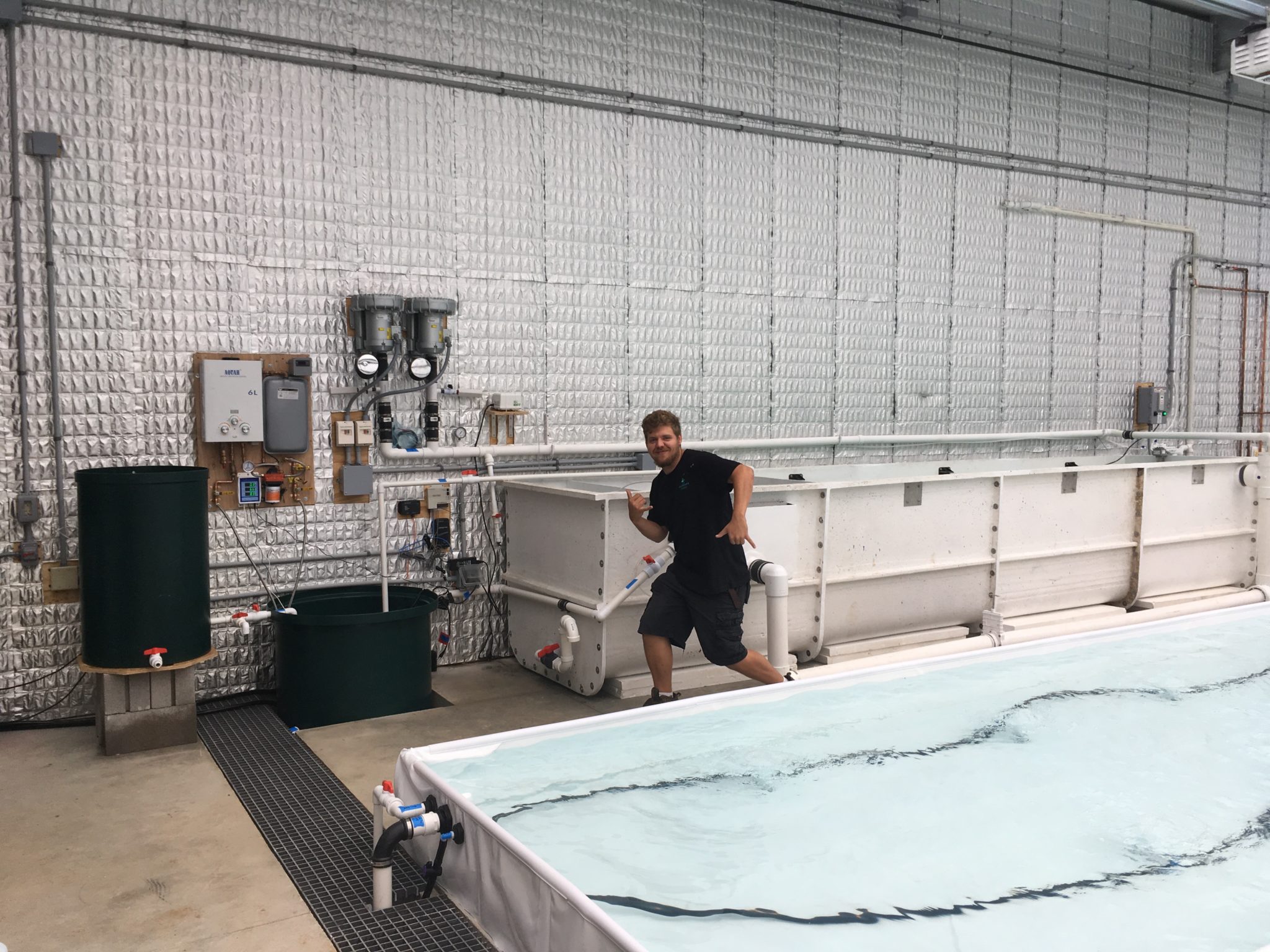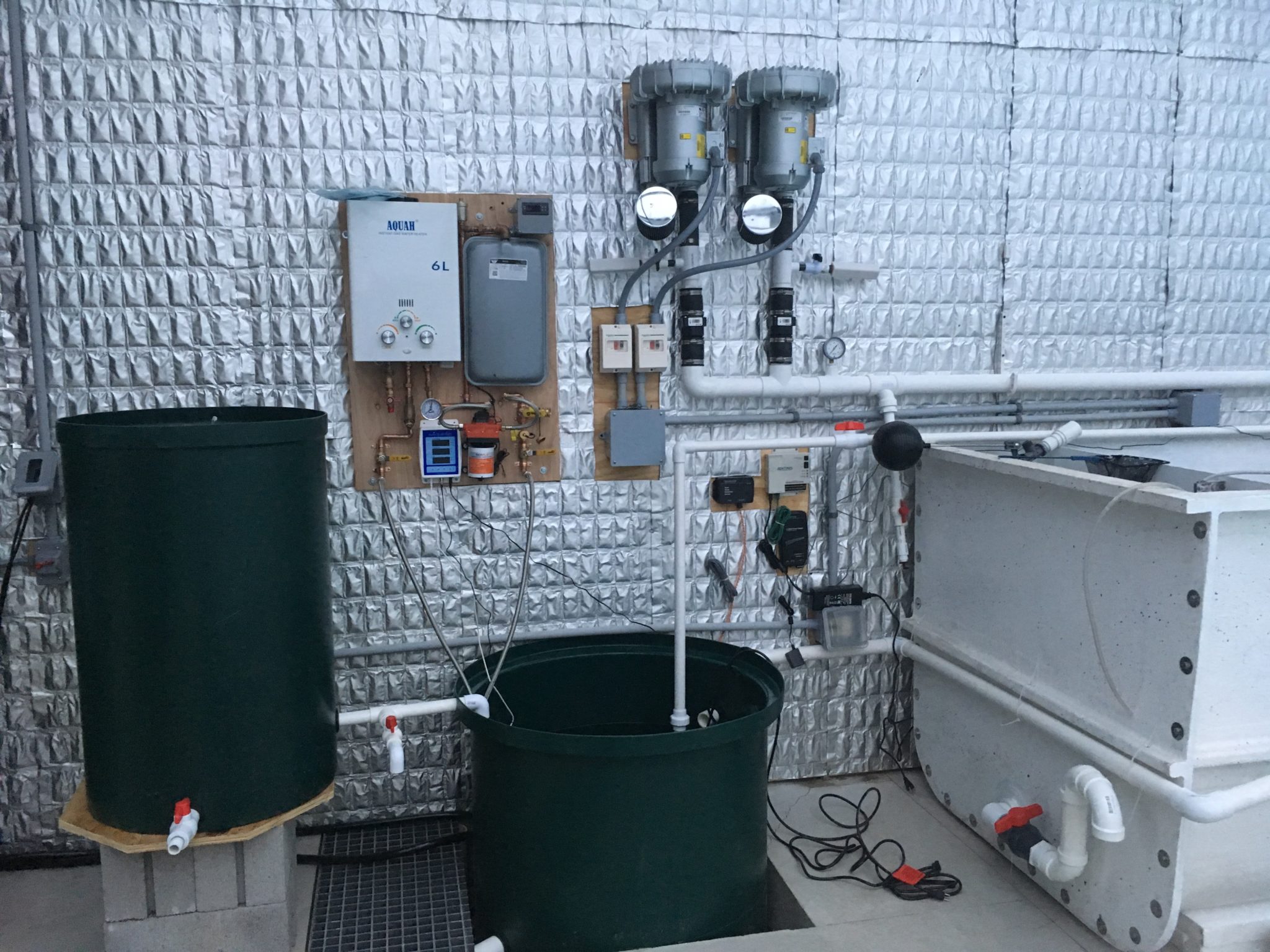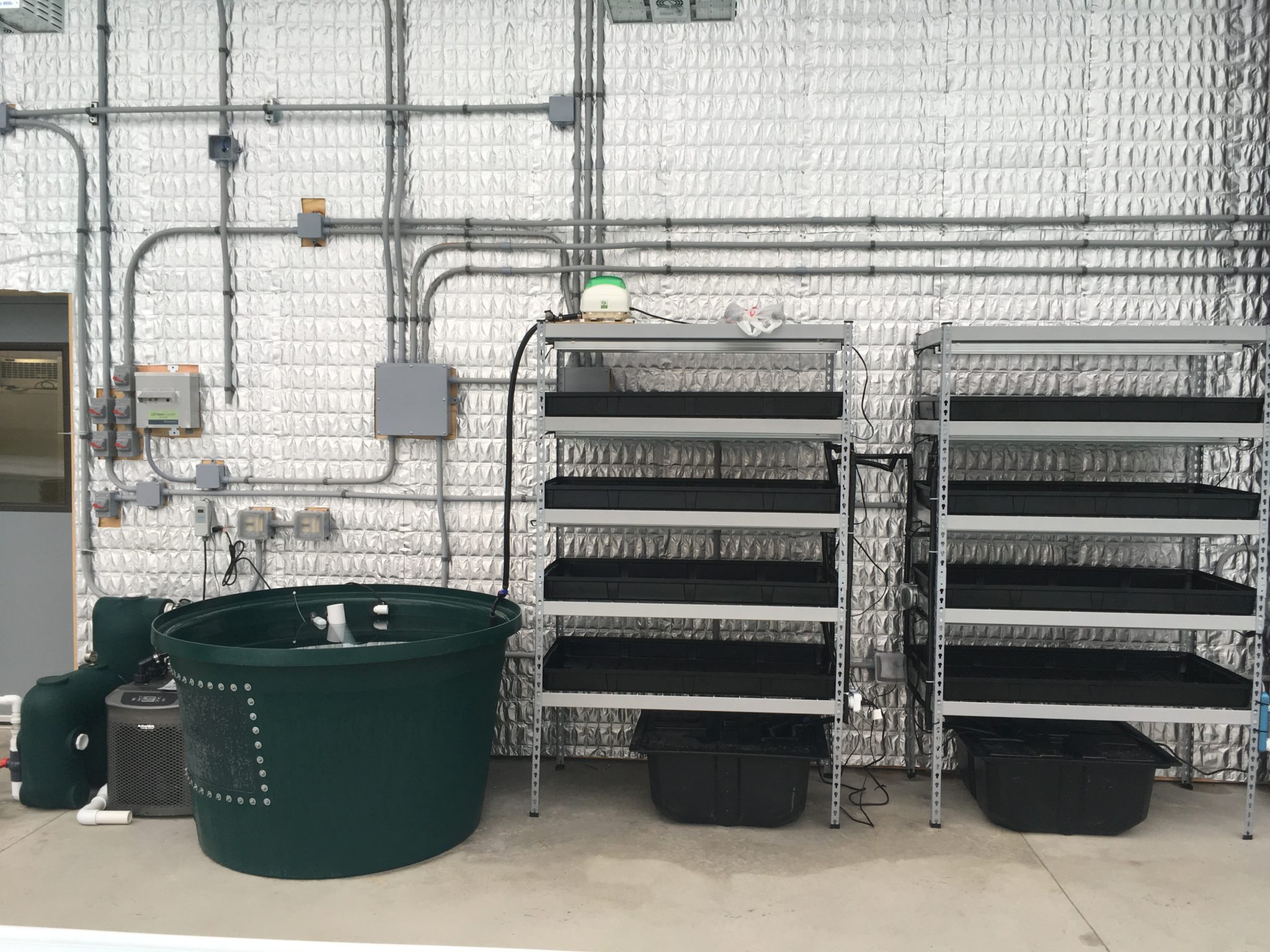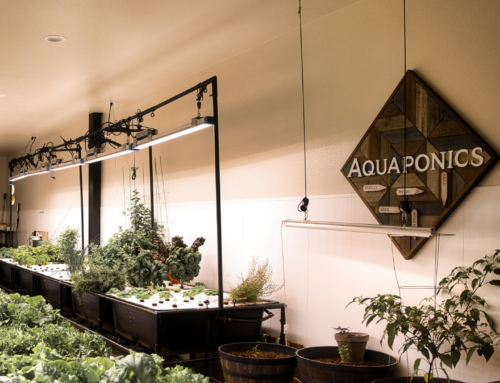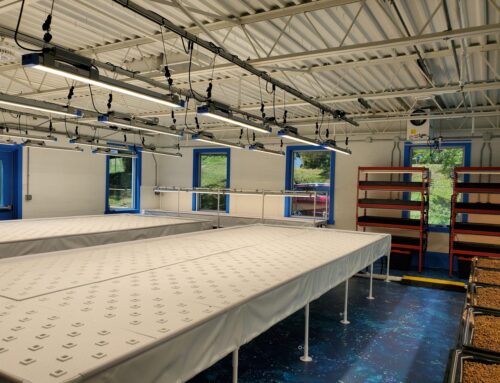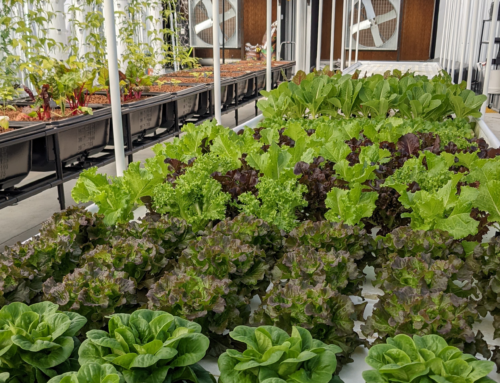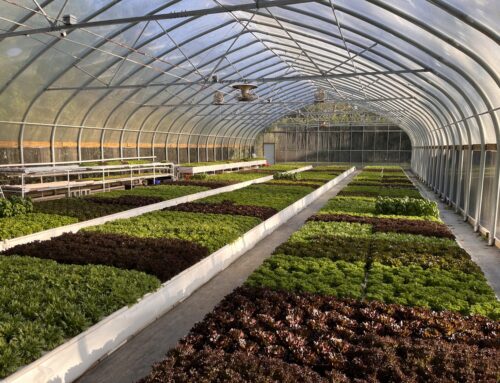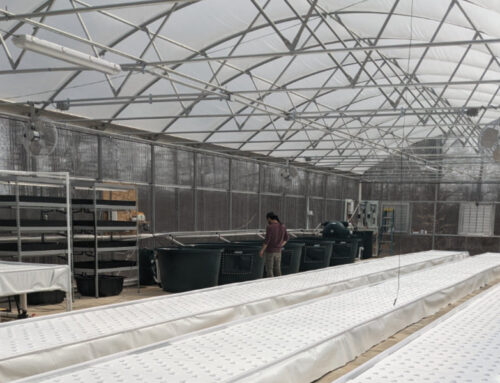Forest County Potawatomi Aquaponics
Laona, Wisconsin
The Forest County Potawatomi (FCP) have lived in Forest County, Wisconsin, since the late 1800s. Around 1880, groups settled in areas near Blackwell and Wabeno and have lived in that area since, as well as in the Carter and Crandon (or Stone Lake) areas. Today, life on the reservation is very different than it was for the elders. They have done much for the younger generation, and it is because of the elders that the younger generations are who they are today. By pursuing a diverse set of business models, the Forest County Potawatomi of today are the largest employer in Forest County. With revenues from various tribal enterprises, the Potawatomi have invested in the health, wellness, education, environment and future of its people. The Flourish Farm Aquaponic System will produce fish and greens year round to supplement production of other field crops as well as tomatoes grown seasonally in hoop houses. Produce will be sold and distributed to local schools, tribal members and markets in the area.
Greenhouse Features – The 3,000 sq ft (30 x 100′) passive solar greenhouse was designed by Ceres Greenhouse Solutions. The north wall of the greenhouse is attached to a larger facility which houses a food processing and distribution center, cold storage, classroom and office space. The north wall of the greenhouse is lined with phase change material which absorbs and releases heat energy as it changes from a solid to liquid or vice versa. A ground to air heat transfer system (GAHT) is also used for heating and cooling by storing warm air under the greenhouse and using the ground temperature to cool the air in the summer or warm the air in the winter. A triple wall polycarbonate is used for the glazing on the south facing side of the greenhouse.
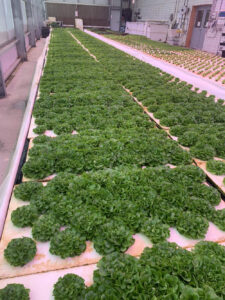 The Aquaponic System – The primary plant production system has two Growasis 8′ x 84′ DWC ground level troughs accompanied by a 2′ x 24′ Growasis elevated transplanting trough. Two Growasis 4 Tier Vertical Nursery Systems for germination and microgreen production are positioned adjacent to the transplanting trough for easy access. The main production troughs are capable of producing over 60,000 annual plants assuming a 4 week transplant to harvest time under the artificial lighting system.
The Aquaponic System – The primary plant production system has two Growasis 8′ x 84′ DWC ground level troughs accompanied by a 2′ x 24′ Growasis elevated transplanting trough. Two Growasis 4 Tier Vertical Nursery Systems for germination and microgreen production are positioned adjacent to the transplanting trough for easy access. The main production troughs are capable of producing over 60,000 annual plants assuming a 4 week transplant to harvest time under the artificial lighting system.
The aquaculture portion of the system uses an AST FIT 1600 Gallon fiberglass raceway which has its own built in mechanical and biological filtration system. The fish system is plumbed to allow either a continuous exchange of water with the plant system via the adjacent plant sump or can be run decoupled by automatically topping of water into the plant sump with no exchange back to the fish. We plumbed this system two ways to provide the customer the ability to operate it in decoupled or coupled mode. The fish tank can also run in complete isolation with no exchange to the plant sump and the plant system can operate independently with it’s pump supplying water and hydroponic nutrients to the grow beds as needed. Two Sweetwater regenerative blowers (one primary and one backup) are installed to provide aeration and airlift based circulation through the fish tank and biofilter.
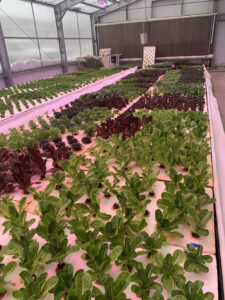 A dedicated purge and quarantine system is located next to the main production system. The system features a 200 gallon tank with an Endurance 2000 auto-backwashing filter, chiller and dedicated auto water top off among other standard features.
A dedicated purge and quarantine system is located next to the main production system. The system features a 200 gallon tank with an Endurance 2000 auto-backwashing filter, chiller and dedicated auto water top off among other standard features.
The main sump tank is partially buried in the ground and contains the plant system pump. An Aquaheat propane based heater is mounted directly above the sump with a heat exchange coil placed in the plant sump to transfer heat into the water. The fish system also has its own dedicated electric heating system in the event the system is running decoupled. Also located near the sump is a Sensaphone auto dialer which can alert operators in the event of a flood condition, air and water temperature variance, loss of air pressure, or loss of power. Supply and return plumbing between the sump and the plant systems are all below grade so there are no tripping hazards and unsightly plumbing.
A secondary mineralization tank is located next to the sump which is used for breakdown of solids removed from the fish tank’s settling chamber. Nutrient dense supernatant created from the aerobic mineralization, breakdown and separation of solid waste can be easily discharged into the plant sump for an additional nutrient boost.

